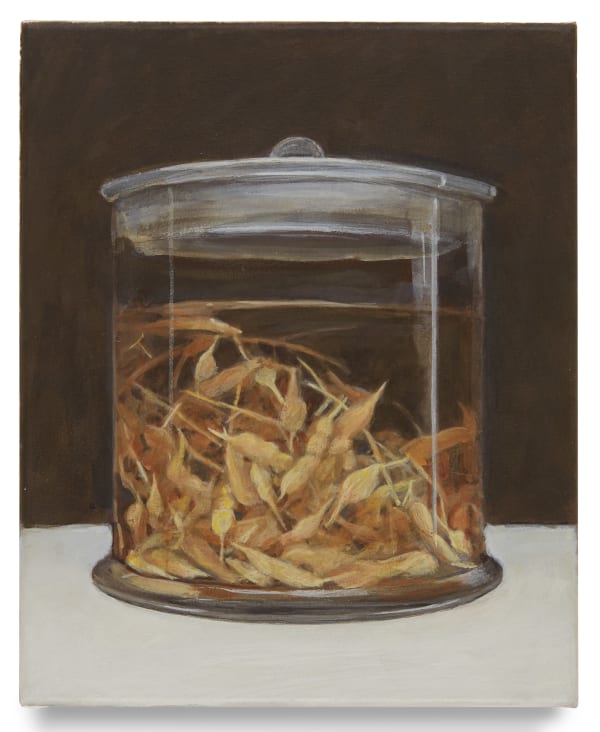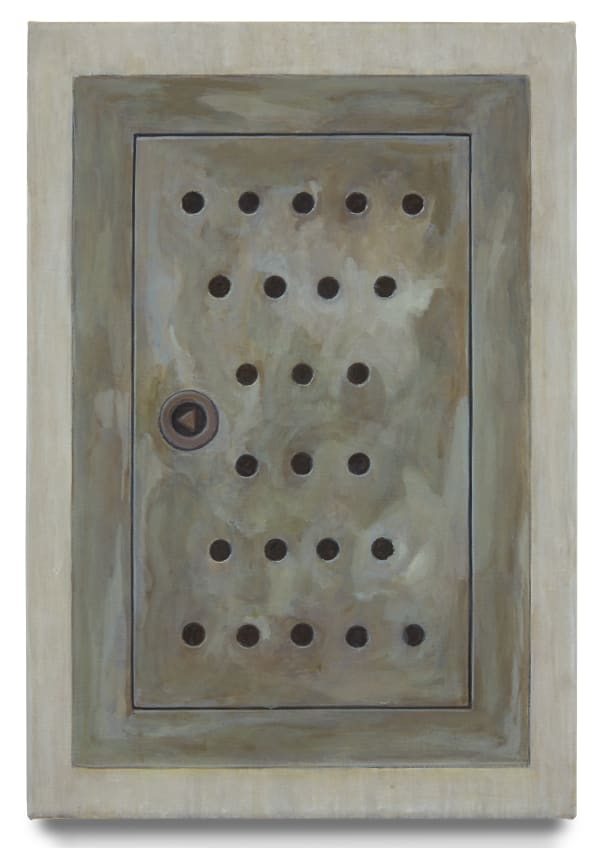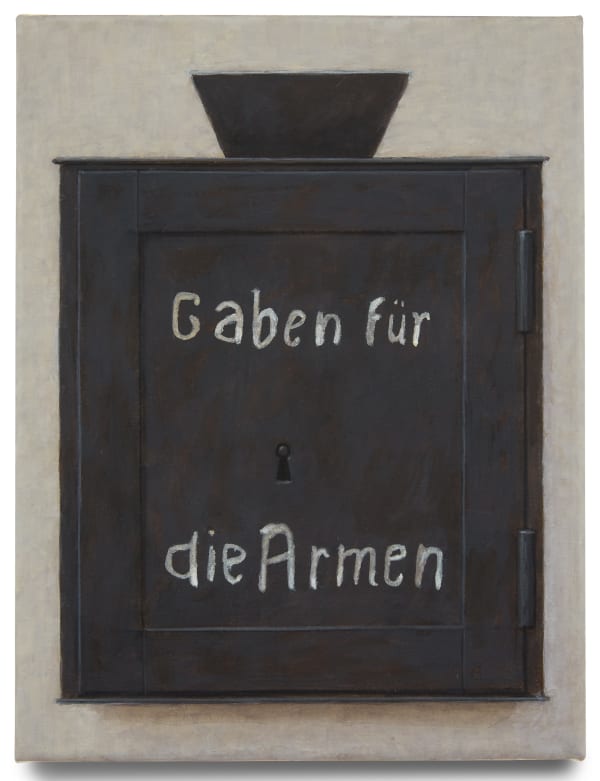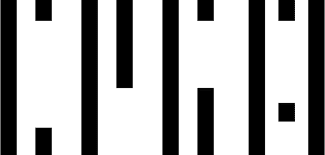-
Walk-through with Christoph Hänsli and Franziska Stern-Preisig
Friday, March 1, 6 - 8 pm
Galerie Peter Kilchmann, Zahnradstrasse 21, 8005 Zürich
Galerie Peter Kilchmann is pleased to announce the first solo exhibition Stützpunkt (Base Point) by Swiss artist Christoph Hänsli (*1963) at the gallery's premises at Zahnradstrasse
Stützpunkt (Base Point) sends us on a journey to discover three different rooms filled with meaningful objects which have been transformed using acrylic, oil or egg tempera on canvas, cardboard, or paper. Newly produced works that have never been shown before are juxtaposed to a few earlier works.
Since the beginning of Hänsli’s artistic career the ''thing'' has been at the center. The artist turned to figurative painting at the end of the 1980s and has dedicated himself to it ever since. With his Popcorn series from 1992, Hänsli ultimately decided to reproduce every painted object on a scale of 1:1, a practice to which he has remained committed to this day. His ‘’thing portraits’’ emerge from a multitude of layers of colour and give a voice to found or newly discovered objects. Hänsli's works, which lie somewhere between conceptual art, realism, and pop art - if you want to try and categorise them as ''-isms'' - are factual and have a documentary approach at first glance, but are deeply subjective at second glance, interwoven with melancholy with a slight, subliminal, humorous twist. Thus, Hänsli creates a play, a dance between the presence and absence of things and humans.
-
Christoph Hänsli sends us on a journey to discover three different rooms filled with meaningful objects which have been transformed using acrylic, oil or egg tempera on canvas, cardboard, or paper. Newly produced works that have never been shown before are juxtaposed to a few earlier works. Thereby the leitmotifs of Hänsli's work are even more visible.
-
-

-
A flesh-coloured object lies in a glass. Numerous branches, indentations and net-like growths cover its uneven surface. These are muscle cords, veins and coronary vessels. Christoph Hänsli shows a realistic depiction of a human heart. A transparent liquid surrounds the organ. A heavy glass lid closes the specimen at the top.
The title of Hänsli's work is "Wet preparation of aneurysm arteriae coronariae". The Latin term refers to an aneurysm in the heart, an arterial dilatation that can lead to death. Hänsli painted the diseased organ with egg tempera and acrylic on canvas. The objective inventory of the inserted body part attracts the eye, fascinates and repels.
For the organ also refers to the dead body from which it was removed, to its removal, to the process of dissection and labelling. In its almost old-masterly realisation, the work is also reminiscent of a vanitas still life. In this pictorial form, which was particularly widespread in the Baroque period, the depiction of inanimate objects becomes a symbol of transience. Hänsli's heart in a glass is no exception.
Text from Anja Grossmann
-

-
-
The first room reveals a universe of painted relicts from our civilization. With a loose but precise style, Christoph Hänsli draws a series of paper plates with a blob of sauce on them. The title of the series indicates that curry and bratwurst sausages were consumed here. The light cardboard trays float on a dark background, brought to life by subtle grey nuances. Following calm gestures, thin glazes of colour are layered to create an almost naturalistic image. Appearing photorealistic from a distance, Christoph Hänsli's painting process can be followed exactly from close up. A poetic interplay is created between presence and absence as well as the present pleasure of viewing.
-
-
Frontally portrayed, closed facades convey emotions of hope, desire, promise and especially the urge for answers: What is hiding behind closed doors? To this question, Hänsli deliberately gives us no answer through his paintings of closed coverages in the second room. For example, we encounter the works Tresor (Safe, 49.5 x 43.5 cm), Rote Klappe (Red flap, 65.5 x 85.5) or Milchkasten (Parcel box, 54 x 43.5 cm), all paintings of closed doors, of exteriors. The artist does not want to show us what lies behind them, but rather wants us to explore the surface of these objects, these screens. Further the painted offertories focus additionally on the supposed salvific effect of words. The curiosity of what lies concealed is potentiated by Hänsli's method. For the artist, a thing is never just a thing. Hänsli paints objects in order to be able to see them properly, in particular to make them tangible for himself. Paintings and especially representations of vessels always function as containers for content, narratives or traditions that are inscribed into the surfaces by both the artist and the viewer.
-

Galerie Peter Kilchmann
Zahnradstrasse, Zurich
12 January - 9 March 2024

















